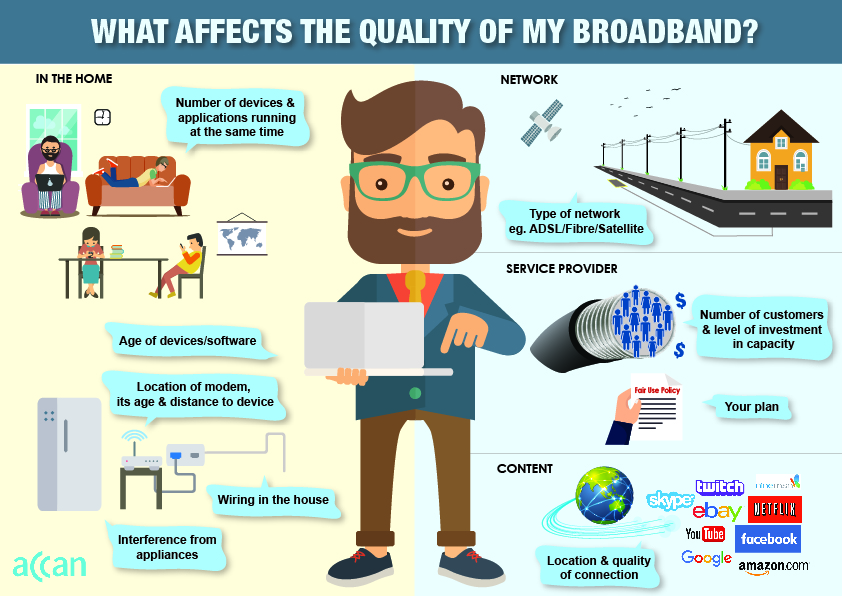 Increasingly providers are advertising and pricing broadband plans based on speed; stating exact speeds that they can provide such as up to ‘12/1Mbps’, ‘25/5Mbps’ or ‘100/40Mbps.’ They are also using terms and price tiers that imply faster speed levels such as ‘high speed internet’, ‘super boost’, ‘lightning fast’, ‘superfast’ or ‘max speed.’
Increasingly providers are advertising and pricing broadband plans based on speed; stating exact speeds that they can provide such as up to ‘12/1Mbps’, ‘25/5Mbps’ or ‘100/40Mbps.’ They are also using terms and price tiers that imply faster speed levels such as ‘high speed internet’, ‘super boost’, ‘lightning fast’, ‘superfast’ or ‘max speed.’
ACCAN is concerned that consumers are negatively affected by the lack of clarity about what these claims mean. The ACCC has raised concerns regarding consumer information about broadband and says these speed claims and terms “might misrepresent the speeds that the retail broadband service can consistently achieve, especially during peak periods”.
This is worrying given that a 2016 ACCAN survey found that 58 per cent of respondents agreed with the statement ‘you get the same speed at home as advertised in your plan.’ Furthermore, opinion was split when asked if providers differ in the level of quality services that they offered. When consumers can pay between $10 and $30 extra a month, or up to $360 extra a year, to get a ‘faster’ service it should be clear what level of service they are getting.
In a consultation released this week – Broadband Speed Claims – the ACCC sets out that it “wants to see consumers provided with better information about broadband speeds”. ACCAN believes that consumers should have access to greater information on service performance on which to base their decisions when choosing a plan or switching providers. The ACCC consultation asks important and timely questions like:
- ‘Do you find it easy to compare the speed of different internet offers when choosing between internet service providers or particular plans?’
- ‘Which type of information about broadband speed would make it easier to compare broadband services to meet your home internet needs?’
We strongly encourage all consumers to take a few minutes to answer these questions for the ACCC’s consultation.
Background information on broadband performance
When consumers read the small print of what affects broadband speeds in plans, they quickly find a lengthy array of factors that may affect the service that they will actually receive. The list is nearly endless; from equipment in the consumers’ home, the network, the protocols used, to other consumers being online. It is often hard for a consumer to read, let alone understand how it applies to their service. Most consumers could never realistically work it out for themselves.
Slow data speeds was the top internet complaint issue in the most recent Telecommunications Industry Ombudsman (TIO) complaint statistics with 2,159 issues reported. Slow data speeds is the highest growing complaint area demonstrating a need for greater information on speed claims.
What affects the quality my broadband?
If you are experiencing poor broadband performance, our infographic and detailed article may give you some insight into what could be causing the issue.


Comments powered by CComment